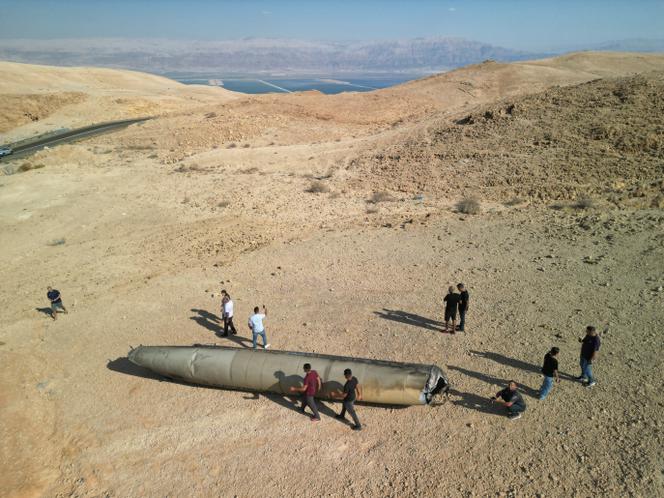


The shower of missiles launched by Iran against Israel on the night of October 1 was, according to most military experts, a show of force but also a revelation of Iran's military weaknesses. In the wake of Tehran's response to Israel's offensive in Lebanon and the elimination in recent weeks of the Hezbollah leadership – one of its most powerful proxies in the Middle East – Iran's arsenal appears both feared and limited, raising many questions about the risks of the conflict escalating.
Whereas in April, when it first retaliated with strikes against Israel, the Islamic Republic seemed to have held back its strength and, above all, sought to assert itself, this time the analysis is quite different. By firing some 200 ballistic missiles, compared with 120 in the spring, Tehran "intended to cause damage and kill Israelis," said Tom Karako, a researcher at the Center for Strategic and International Studies, an American research center.
Thanks to its various layers of missile defense – Iron Dome, David's Slingshot and the Arrow system – Israel was able to counter many of these projectiles. The United States also contributed. On October 2, the Pentagon reported that it had fired a dozen interceptors from destroyers deployed at sea between the Mediterranean and the Gulf of Oman. However, some Iranian missiles were still able to penetrate Israeli defenses, leaving clearly visible craters. With such an offensive, Iran was able to demonstrate the strength of its arsenal, largely developed in the shadow of the international sanctions that have been steadily toughened against the regime since 2006.
Launched in 1983, in the midst of the Iran-Iraq war (1980-1988), in response to Iraqi missile attacks, Iran's missile program today comprises dozens of types of rockets, ballistic and cruise missiles, with an estimated stockpile of several thousand units. Organized around buried sites, sometimes 500 meters underground, according to the Iranian regime, it is one of the most diversified and extensive in the Middle East. It's an arsenal "probably" built with "foreign aid," according to Karako, and which is "a threat to Israel but also to other countries in the region, such as Saudi Arabia," continued this missile defense specialist.
Iran has demonstrated this in attacks targeting several countries in the region. In September 2019, its drones and cruise missiles damaged the Khurais oil site and the gigantic Abqaiq refinery in Saudi Arabia, foiling the country's anti-missile defenses – including American Patriot systems. Since 2020, Tehran has also launched dozens of attacks against US bases in Iraq and Syria, using various types of weapons including ballistic missiles.
You have 58.05% of this article left to read. The rest is for subscribers only.
